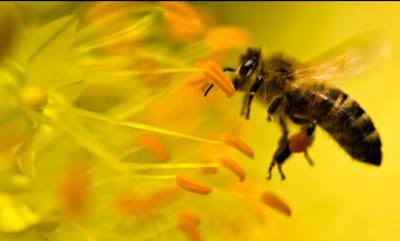 ¿Sabías que la supervivencia del formidable árbol de castaña, de la selva amazónica, depende de la polinización que hacen de sus frutos unas abejas no más grandes que una arvejita? ¿Somos acaso conscientes de que estos insectos son vitales para que las cosechas de frutales de todo el mundo lleguen a producir los frutos que tenemos diariamente en nuestras mesas? Pues, así es.
¿Sabías que la supervivencia del formidable árbol de castaña, de la selva amazónica, depende de la polinización que hacen de sus frutos unas abejas no más grandes que una arvejita? ¿Somos acaso conscientes de que estos insectos son vitales para que las cosechas de frutales de todo el mundo lleguen a producir los frutos que tenemos diariamente en nuestras mesas? Pues, así es. La polinización es el proceso por el cual los granos de polen son transportados desde su lugar de origen (la flor de una planta) hasta el lugar adecuado para que sean recibidos en la estructura femenina de otra flor (por lo general el óvulo). Cuando el transporte de polen se hace entre flores de plantas diferentes se llama polinización cruzada.
El polen es producido en una estructura llamada esporangio, ubicada en los estambres, parte masculina de las flores, y es conducido hasta los óvulos situados en el pistilo, órgano femenino de la flor. Así, la flor es fecundada y puede producir los frutos que contendrán a las semillas.
La planta produce aromas y néctar rico en azúcares que avisan si la flor está lista para ser polinizada. Proporciona un vital suplemento nutricional al insecto y este, a cambio, visita las flores con puntualidad y dedicación, llevando el polen de planta en planta y propiciando el intercambio de genes entre la especie. Así, la reproducción de la planta está garantizada.
You know the role of bees in pollination ?
Did you know that the survival of the formidable chestnut tree, the Amazon rainforest depends on pollination make some no bigger than a pea bees? Are we aware that these insects are vital for fruit crops around the world come to produce the fruits that we have every day on our tables? Well, that's right. Pollination is the process by which pollen grains are transported from their place of origin (the flower of a plant) to the right place to be received in the female structure of another flower (usually an egg). When transporting pollen is made between different plant flowers it is called cross-pollination. Pollen is produced in a structure called a sporangium, located on the stamens, male part of the flower, and is led to the eggs located in the pistil, the female organ of the flower. Thus, the flower is fertilized and can produce the fruits that contain seeds. The plant produces scents and nectar rich in sugars that warn if the flower is ready to be pollinated. It provides a vital nutritional supplement to insect and this, in turn, visit the flowers on time and dedication, carrying pollen from plant to plant and promoting the exchange of genes between species.Thus, reproduction of the plant is ensured.VISITA ESTE SITIO. FOMENTA EL CONSUMO DE MIEL Y DIFUNDE LA ACTIVIDAD APÍCOLA.

